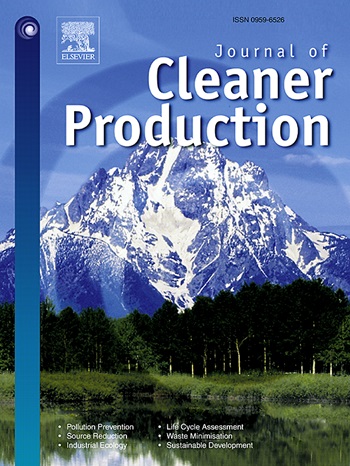Dynamics and interrelationships between antibiotic resistance, organic micropollutants and bacterial communities in full-scale rural constructed wetlands
IF 9.7
1区 环境科学与生态学
Q1 ENGINEERING, ENVIRONMENTAL
引用次数: 0
Abstract
Constructed wetlands systems (CWs) are increasingly regarded as promising alternatives or complements to conventional wastewater treatment processes. However, the fate of chemical and biological contaminants in real-world treatment processes is understudied in this type of systems. This study aimed to fill this gap by evaluating the response of three horizontal subsurface flow CWs, in Northern Portugal, planted with Phragmites australis, in operation for >7 years, to reducing the load of fecal contamination, antibiotic resistance genes and organic micropollutants (OMPs).
Influent, effluent and sediments samples (n = 36) were examined for abundance of cultivable Escherichia coli and total coliforms, total bacteria (16S rRNA gene), 10 genetic biomarkers associated with anthropogenic contamination (uidA, crAssphage, intI1, sul1, ermB, ermF, mefC, qacEΔ1, tetX and aph(3″)-Ib) by quantitative PCR, non-target LC-MS of OMPs and 16S rRNA gene-based bacterial community analysis.
The three CWs showed reduction values (log-units/mL) up to 4.8 of E. coli and 3.6 of biomarkers, with the highest values observed in warmer periods. No evidence of for the accumulation microbiological contaminants in the sediments was observed. Among the 59 OMPs detected, reduction rates varied, and the concentration of the most abundant pharmaceutical compounds in the final effluent varied –reaching ng/L concentrations of ∼36 000 for fenofibric acid, ∼14 000 for acetaminophen, ∼3000 for oxazepam and ∼2000 for irbesartan, which can be considered high to discharge in the receiving environment. The bacterial community was dominated by members of the class Gammaproteobacteria, with treatment contributing to significant reduction of the relative abundance of members of the classes Clostridia, Bacilli and Actinomycetes. Compared with wastewater, sediments had significantly higher relative abundance of Alphaproteobacteria.
The study confirms that CWs are an adequate alternative for the treatment of domestic wastewater in small communities, although it warns of the need for regular monitoring and adjustment of treatment conditions, especially during cooler periods.

全规模农村人工湿地中抗生素耐药性、有机微污染物和细菌群落的动态及其相互关系
人工湿地系统(CWs)越来越被认为是传统废水处理工艺的有前途的替代或补充。然而,在这种类型的系统中,化学和生物污染物在现实世界处理过程中的命运尚未得到充分研究。本研究旨在通过评估在葡萄牙北部种植芦苇7年的三个水平地下流CWs对减少粪便污染、抗生素抗性基因和有机微污染物(OMPs)负荷的响应来填补这一空白。通过定量PCR、OMPs非靶LC-MS和基于16S rRNA基因的细菌群落分析,检测了36个进水、出水和沉积物样品中可培养大肠杆菌、总大肠菌群、总细菌(16S rRNA基因)、10个与人为污染相关的遗传生物标志物(uidA、crAssphage、intI1、sul1、ermB、ermF、mefC、qacEΔ1、tetX和aph(3″)-Ib)的丰度。这三种CWs显示大肠杆菌的还原值(对数单位/mL)高达4.8,生物标志物的还原值高达3.6,在温暖时期观察到的值最高。没有观察到沉积物中微生物污染物积累的证据。在检测到的59种omp中,还原率各不相同,最终出水中最丰富的药物化合物的浓度也各不相同——非诺纤维酸的浓度为~ 36000,对乙酰氨基酚的浓度为~ 14000,奥西泮的浓度为~ 3000,厄贝沙坦的浓度为~ 2000,可以认为在接收环境中排放的浓度很高。细菌群落以γ变形菌纲成员为主,处理有助于显著降低梭状芽胞杆菌、芽胞杆菌和放线菌纲成员的相对丰度。沉积物中α变形菌的相对丰度明显高于废水。该研究证实,化粪池是处理小型社区生活废水的一种适当的替代方案,尽管它警告说,需要定期监测和调整处理条件,特别是在较冷的时期。
本文章由计算机程序翻译,如有差异,请以英文原文为准。
求助全文
约1分钟内获得全文
求助全文
来源期刊

Journal of Cleaner Production
环境科学-工程:环境
CiteScore
20.40
自引率
9.00%
发文量
4720
审稿时长
111 days
期刊介绍:
The Journal of Cleaner Production is an international, transdisciplinary journal that addresses and discusses theoretical and practical Cleaner Production, Environmental, and Sustainability issues. It aims to help societies become more sustainable by focusing on the concept of 'Cleaner Production', which aims at preventing waste production and increasing efficiencies in energy, water, resources, and human capital use. The journal serves as a platform for corporations, governments, education institutions, regions, and societies to engage in discussions and research related to Cleaner Production, environmental, and sustainability practices.
 求助内容:
求助内容: 应助结果提醒方式:
应助结果提醒方式:


